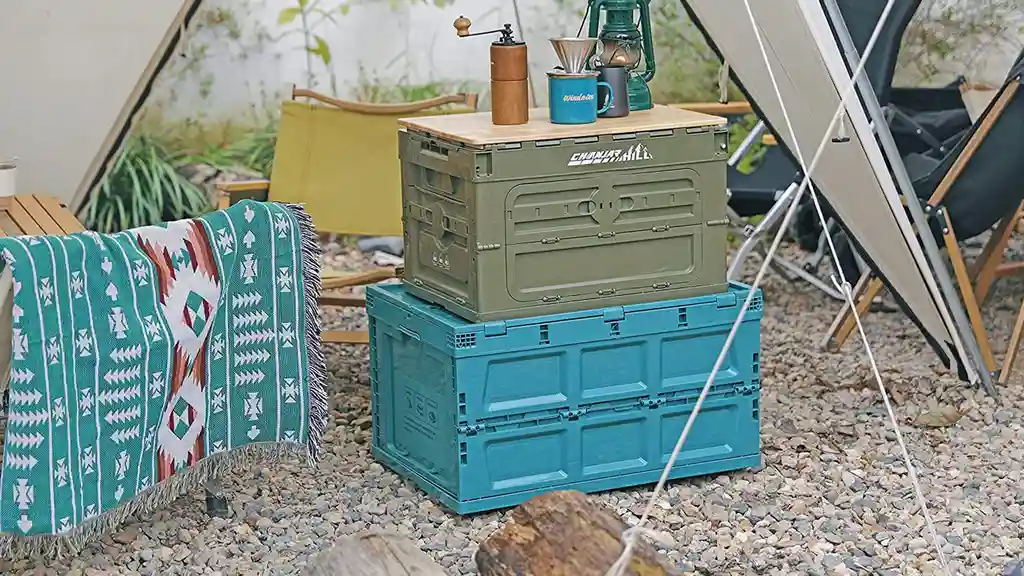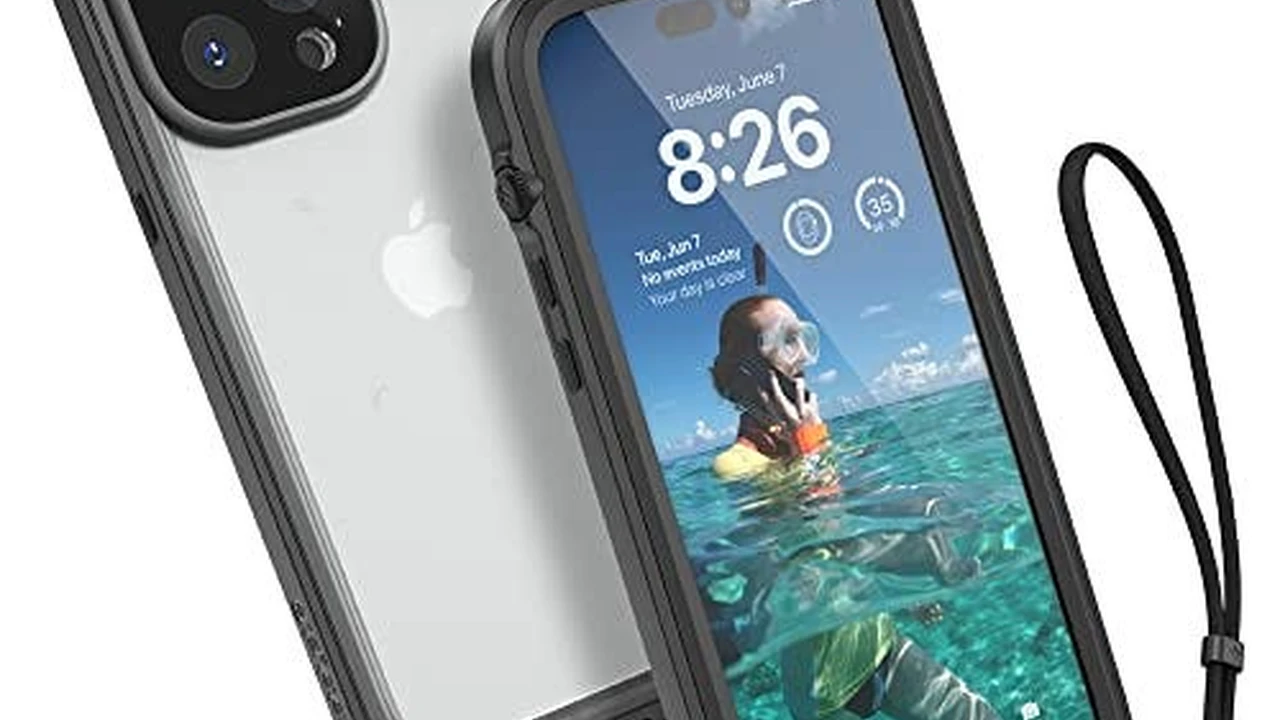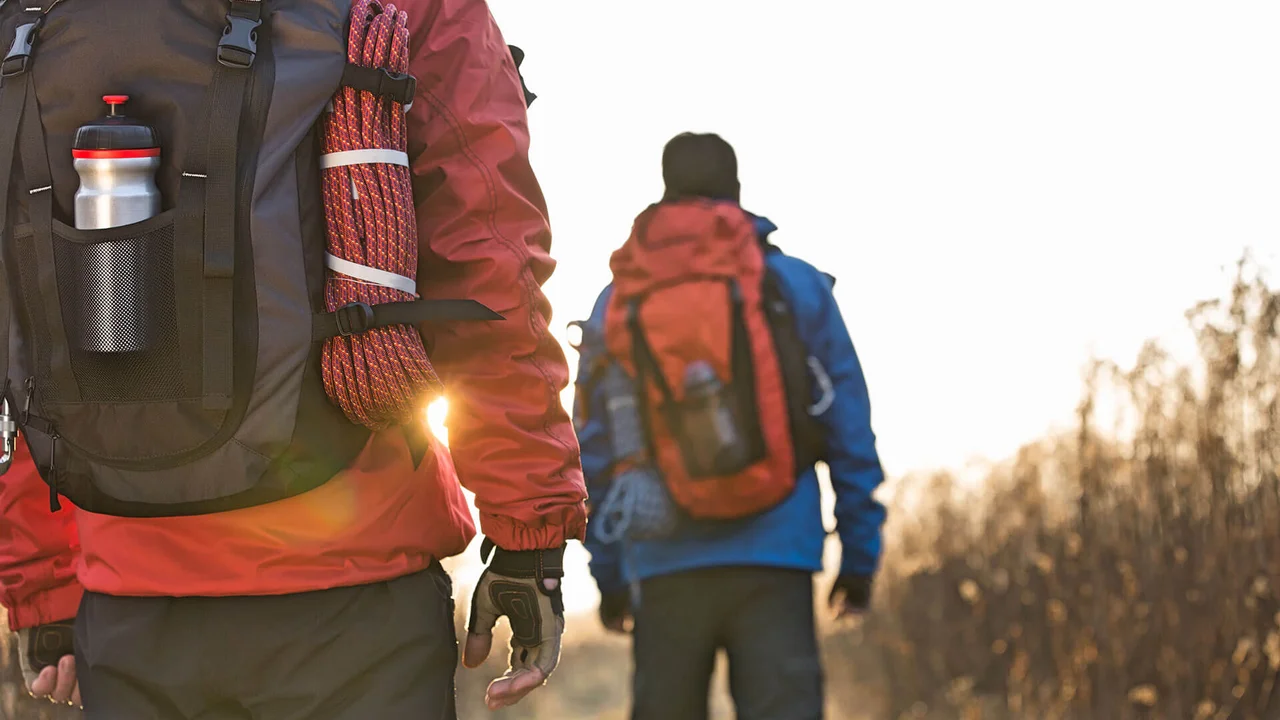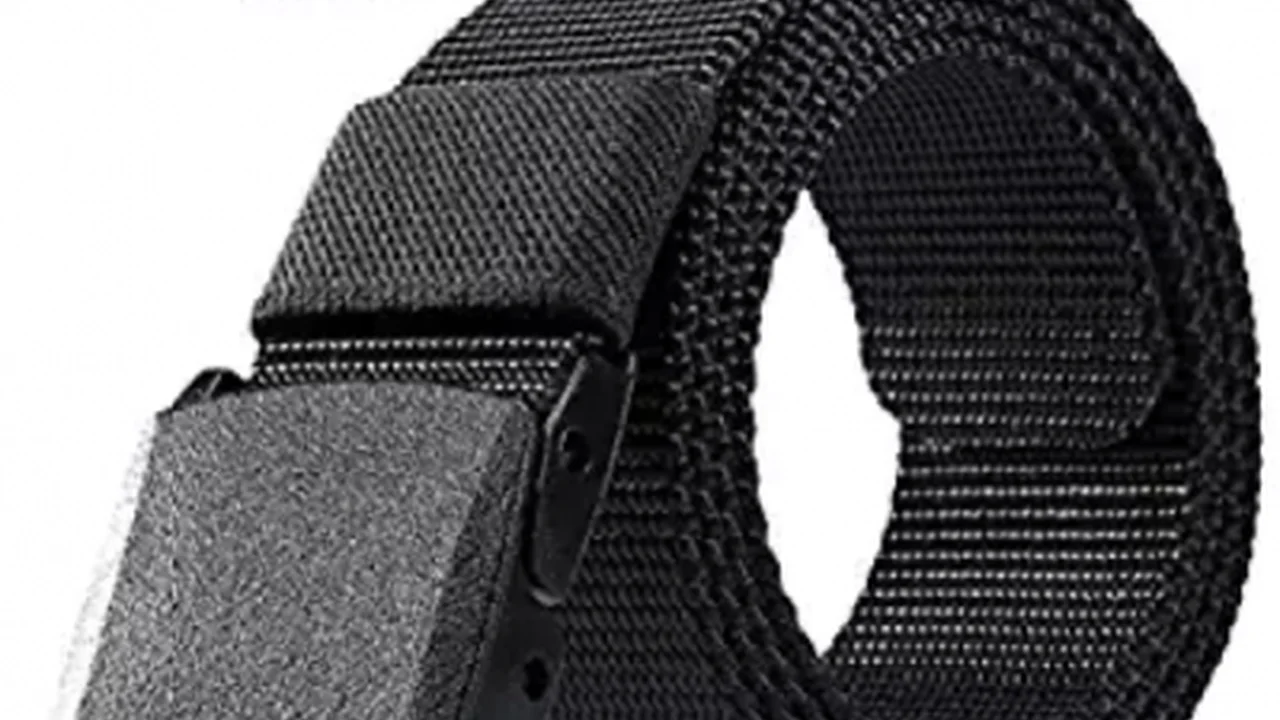Best Lightweight Rain Jackets for Hikers
Stay dry with the best lightweight rain jackets for hikers. Compare waterproofing, breathability, and packability for unpredictable weather.
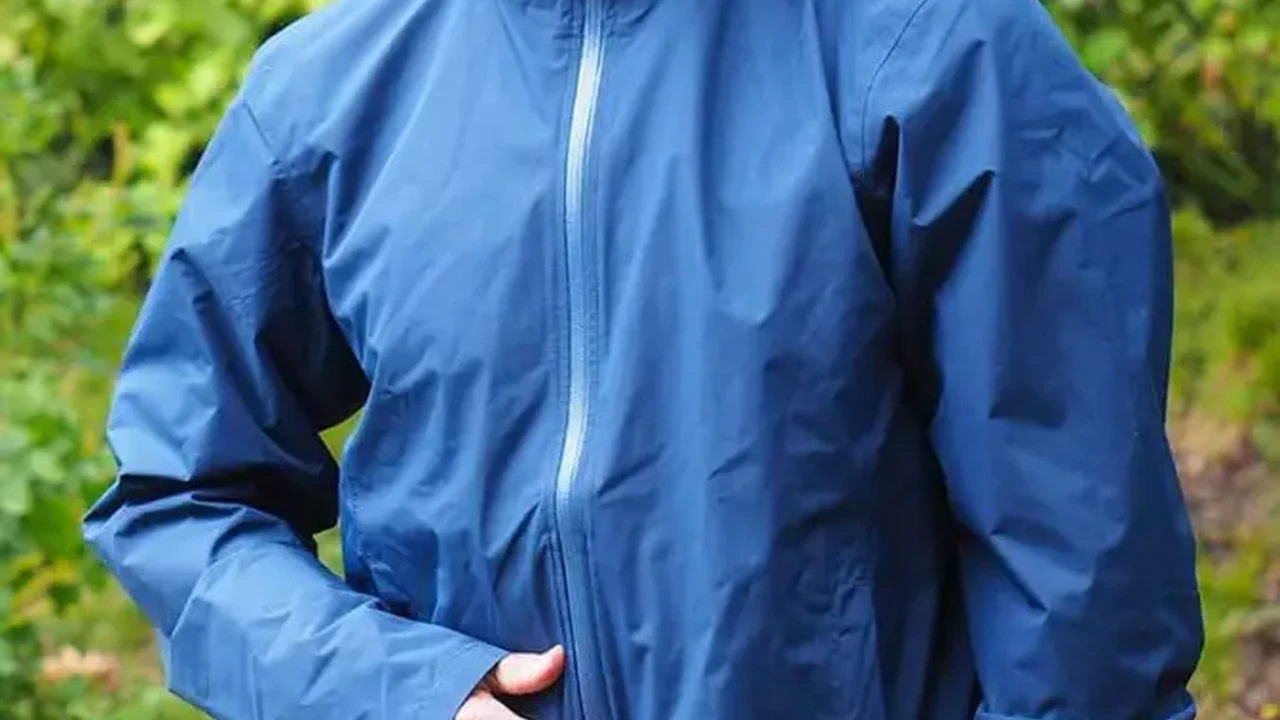
Best Lightweight Rain Jackets for Hikers
Why a Lightweight Rain Jacket is Your Hiking Essential
When you're out on the trail, whether it's a short day hike or a multi-day trek, the weather can change in an instant. A sunny morning can quickly turn into a torrential downpour, and being caught unprepared is not just uncomfortable, it can be dangerous. That's where a high-quality lightweight rain jacket comes in. It's not just about staying dry; it's about maintaining your core body temperature, preventing hypothermia, and ensuring your overall comfort and safety. Unlike heavier, bulkier rain gear, lightweight options are designed to be easily packed away when not needed, taking up minimal space and adding negligible weight to your pack. This makes them an indispensable piece of gear for any hiker, from the casual weekend warrior to the seasoned thru-hiker. We're talking about jackets that offer serious protection without the bulk, allowing you to move freely and enjoy the outdoors, come rain or shine.
Understanding Rain Jacket Technology Waterproofing and Breathability Explained
The magic behind a great rain jacket lies in its ability to keep water out while allowing sweat and moisture vapor to escape. This is achieved through advanced fabric technologies, primarily focusing on waterproofing and breathability. Let's break down the key terms you'll encounter:
Waterproof Ratings and Hydrostatic Head
Waterproofness is often measured by a 'hydrostatic head' rating, expressed in millimeters (mm). This indicates the height of a column of water that a fabric can withstand before water starts to penetrate. Generally:
- 5,000mm - 10,000mm: Good for light rain and general use.
- 10,000mm - 20,000mm: Excellent for moderate to heavy rain and prolonged exposure.
- 20,000mm+: Superior protection for extreme conditions and prolonged downpours.
Common waterproof membranes include GORE-TEX, eVent, Pertex Shield, and proprietary technologies from brands like Patagonia (H2No) and Outdoor Research (Ventia). These membranes have microscopic pores that are too small for liquid water droplets to pass through, but large enough for water vapor (sweat) to escape.
Breathability Ratings and MVTR
Breathability is crucial for comfort, preventing that clammy, sweaty feeling inside your jacket. It's often measured by Moisture Vapor Transmission Rate (MVTR), expressed in grams per square meter per 24 hours (g/m²/24hr). A higher number indicates better breathability:
- 5,000 - 10,000 g/m²/24hr: Decent breathability for low-intensity activities.
- 10,000 - 20,000 g/m²/24hr: Good breathability for moderate activity levels.
- 20,000+ g/m²/24hr: Excellent breathability for high-exertion activities.
Some jackets also feature pit zips (zippers under the arms) and mesh-lined pockets to enhance ventilation, allowing you to dump heat quickly when you're working hard.
Durable Water Repellent DWR Coatings
Most rain jackets also have a Durable Water Repellent (DWR) coating on the outer fabric. This causes water to bead up and roll off the surface, preventing the fabric from becoming saturated, which can reduce breathability. DWR coatings wear off over time and need to be reapplied periodically to maintain performance.
Key Features to Look for in a Hiking Rain Jacket
Beyond waterproofing and breathability, several other features contribute to a rain jacket's effectiveness and user experience on the trail:
Hood Design and Adjustability for Weather Protection
A good hood is paramount. Look for one that is adjustable (drawcords at the front and back) to ensure a snug fit that moves with your head, allowing for good peripheral vision. A stiffened brim or wire brim can help keep rain out of your eyes. Some hoods are helmet-compatible, which is a bonus if you also climb or cycle.
Zipper Quality and Water Resistance
All zippers, especially the main front zipper, should be water-resistant or waterproof. Look for YKK AquaGuard zippers or storm flaps that cover the zipper to prevent water ingress. A two-way main zipper can be useful for ventilation or accessing layers underneath.
Pocket Placement and Functionality for Accessibility
Pockets should be strategically placed so they are accessible even when wearing a backpack hip belt. Chest pockets or high-set hand pockets are ideal. Ensure they have water-resistant zippers or storm flaps to protect contents.
Adjustable Cuffs and Hem for Sealing Out Elements
Velcro or elastic cuffs allow you to seal out rain and wind, and also to vent heat when needed. An adjustable hem (usually with a drawcord) helps keep the jacket snug around your waist, preventing drafts and water from splashing up.
Packability and Weight for Backpacking Efficiency
For hikers, especially backpackers, the jacket's packed size and weight are critical. Many lightweight rain jackets can pack down into their own pocket or a small stuff sack, making them easy to stash in your pack until needed.
Top Lightweight Rain Jackets for Hikers Product Reviews and Comparisons
Now, let's dive into some of the best lightweight rain jackets currently on the market, comparing their features, performance, and ideal use cases.
1. Outdoor Research Helium Rain Jacket The Ultralight Champion
Ideal for: Ultralight backpacking, fast-and-light missions, emergency shell.
The Outdoor Research Helium Rain Jacket has long been a favorite among ounce-counting hikers and backpackers. It's renowned for its incredibly low weight and impressive packability, often packing down to the size of a grapefruit. It uses Pertex Shield+ fabric, offering a good balance of waterproofing and breathability for its weight class.
- Waterproofing: 20,000mm
- Breathability: 20,000 g/m²/24hr
- Weight: Approximately 6.3 oz (179g) for men's medium
- Key Features: Single chest pocket, adjustable hood, elastic cuffs, carabiner loop for easy attachment.
- Pros: Extremely lightweight and packable, excellent emergency shell, surprisingly durable for its weight.
- Cons: Minimal features (no pit zips, limited pockets), breathability can be overwhelmed during high exertion, not ideal for prolonged heavy rain.
- Price: Around $159 - $179 USD
- User Scenario: You're planning a fast-paced thru-hike where every ounce counts, or you need a reliable emergency layer for unexpected showers on a day hike. Its minimalist design means less bulk and weight, perfect for stuffing into a small corner of your pack.
2. Patagonia Torrentshell 3L Jacket The All-Rounder
Ideal for: General hiking, day trips, casual use, budget-conscious hikers.
The Patagonia Torrentshell 3L is a perennial best-seller for good reason. It offers excellent value, reliable performance, and a comfortable fit. Patagonia's proprietary H2No Performance Standard 3-layer fabric provides solid waterproofing and breathability, making it a versatile choice for a wide range of conditions.
- Waterproofing: 20,000mm+ (Patagonia's H2No standard)
- Breathability: Good (specific MVTR not always published, but performs well)
- Weight: Approximately 13.9 oz (394g) for men's medium
- Key Features: Pit zips for ventilation, two hand pockets, adjustable hood with laminated visor, microfleece-lined neck, packs into its own pocket.
- Pros: Great balance of features, protection, and price; good breathability with pit zips; comfortable fit; sustainable materials (recycled nylon).
- Cons: Not the absolute lightest or most breathable for extreme exertion, DWR can wet out over time (but is easily reapplied).
- Price: Around $179 USD
- User Scenario: You're looking for a reliable, everyday rain jacket that can handle anything from a sudden downpour on a local trail to a multi-day trip in variable weather. Its pit zips make it adaptable for changing activity levels, and its robust build inspires confidence.
3. Arc'teryx Zeta SL Jacket The Premium Performer
Ideal for: Fast-and-light hiking, trekking, those seeking ultimate performance and durability.
Arc'teryx is known for its meticulous design and high-quality materials, and the Zeta SL (Superlight) Jacket is no exception. It utilizes GORE-TEX Paclite Plus technology, which offers exceptional waterproofing and breathability in a lightweight, packable package. This jacket is built for serious outdoor enthusiasts who demand the best.
- Waterproofing: 28,000mm+ (GORE-TEX Paclite Plus)
- Breathability: 15,000 - 25,000 g/m²/24hr (GORE-TEX Paclite Plus)
- Weight: Approximately 10.9 oz (310g) for men's medium
- Key Features: WaterTight main zipper and hand pocket zippers, adjustable StormHood, adjustable cuffs and hem, articulated patterning for freedom of movement.
- Pros: Superior waterproofing and breathability, excellent fit and mobility, highly durable for its weight, premium construction.
- Cons: Higher price point, no pit zips (relies solely on membrane breathability), minimalist features.
- Price: Around $299 - $325 USD
- User Scenario: You're embarking on a challenging multi-day trek where reliable weather protection is non-negotiable, and you're willing to invest in top-tier gear. Its GORE-TEX membrane provides peace of mind in the harshest conditions, and its athletic fit allows for unrestricted movement on technical terrain.
4. Marmot PreCip Eco Jacket The Eco-Friendly Value Pick
Ideal for: Casual hiking, everyday use, eco-conscious buyers, budget-friendly option.
The Marmot PreCip Eco Jacket is a fantastic entry-level option that doesn't compromise on performance. It uses Marmot's own NanoPro Eco fabric, which is made from recycled nylon, making it an environmentally friendly choice. It offers solid waterproof and breathable performance for its price point.
- Waterproofing: 10,000mm (Marmot NanoPro Eco)
- Breathability: 17,000 g/m²/24hr (Marmot NanoPro Eco)
- Weight: Approximately 10.8 oz (306g) for men's medium
- Key Features: Pit zips, two hand pockets, adjustable hood that stows in collar, adjustable cuffs and hem, packs into its own pocket.
- Pros: Excellent value, eco-friendly materials, good feature set for the price, decent breathability with pit zips.
- Cons: Not as durable or high-performing as premium options for extreme conditions, DWR may require more frequent reapplication.
- Price: Around $120 USD
- User Scenario: You're a new hiker or someone who needs a reliable rain jacket for occasional use and light to moderate rain. You appreciate sustainable practices and want a jacket that offers good protection without breaking the bank. It's also a great option for travel due to its packability.
5. Black Diamond StormLine Stretch Rain Shell The Active Fit
Ideal for: Dynamic activities, scrambling, climbing approaches, hikers who prioritize mobility.
The Black Diamond StormLine Stretch Rain Shell stands out due to its integrated stretch fabric, which provides exceptional freedom of movement. This makes it ideal for activities where you need to stretch, reach, and move dynamically. It uses Black Diamond's BD.dry waterproof/breathable solution.
- Waterproofing: 10,000mm (BD.dry)
- Breathability: 10,000 g/m²/24hr (BD.dry)
- Weight: Approximately 10.1 oz (286g) for men's medium
- Key Features: Stretch fabric, pit zips, two hand pockets, adjustable hood (helmet-compatible), adjustable cuffs and hem, packs into right-hand pocket.
- Pros: Excellent mobility due to stretch fabric, good feature set including pit zips, comfortable fit, decent value.
- Cons: Waterproofing and breathability ratings are lower than some premium options, not ideal for prolonged heavy downpours.
- Price: Around $150 USD
- User Scenario: You're a hiker who often encounters technical terrain, scrambles, or even does light climbing approaches. The stretch in the fabric allows for uninhibited movement, making it feel less restrictive than traditional rain shells. It's also a great choice for trail running in light rain.
Maintenance and Care Tips for Your Rain Jacket Longevity and Performance
To ensure your lightweight rain jacket continues to perform optimally for years to come, proper care is essential. Neglecting your jacket can lead to reduced waterproofing and breathability.
Cleaning Your Waterproof Breathable Fabric
Contrary to popular belief, you should wash your rain jacket! Dirt, body oils, and sweat can clog the membrane's pores, reducing breathability. Always follow the manufacturer's instructions, but generally:
- Zip all zippers and close all flaps.
- Machine wash on a gentle cycle with warm water (around 104°F / 40°C).
- Use a technical wash designed for waterproof breathable fabrics (e.g., Nikwax Tech Wash or Granger's Performance Wash). Avoid conventional detergents, fabric softeners, and bleach, as these can damage the DWR and membrane.
- Rinse thoroughly to remove all detergent residue.
Reactivating and Reapplying DWR Coating
The DWR coating on your jacket will wear off over time, causing the fabric to 'wet out' (absorb water instead of beading it). You can often reactivate the existing DWR by tumble drying your jacket on a low heat setting for 20 minutes after washing. If this doesn't work, or if water no longer beads up, it's time to reapply a DWR treatment. Products like Nikwax TX.Direct Wash-In or Granger's Performance Repel are excellent for this. Follow the product instructions carefully.
Proper Storage for Off-Season Protection
When not in use, store your rain jacket clean and dry. Avoid compressing it tightly for long periods, as this can stress the membrane. Hang it in a closet or loosely fold it in a breathable storage bag. Keep it away from direct sunlight and extreme temperatures.
Making Your Final Decision The Best Rain Jacket for Your Needs
Choosing the 'best' lightweight rain jacket ultimately depends on your specific needs, the type of hiking you do, and your budget. Consider these factors:
- Activity Level: If you're doing high-exertion activities, prioritize breathability (higher MVTR, pit zips). For more casual use, a jacket with good waterproofing will suffice.
- Expected Conditions: If you frequently hike in areas with heavy, prolonged rain, invest in a jacket with a higher hydrostatic head rating and a robust membrane like GORE-TEX.
- Weight and Packability: For ultralight backpackers, every ounce counts. For day hikers, a few extra ounces might be acceptable for added features or durability.
- Durability: Thicker face fabrics (often measured in denier, e.g., 30D, 40D) will be more durable but also heavier. Consider how much abrasion your jacket will face.
- Budget: Rain jackets range widely in price. Determine what you're willing to spend and find the best balance of features and performance within that range.
No matter which jacket you choose, remember that a lightweight rain jacket is an investment in your comfort and safety on the trail. By understanding the technology, knowing what features to look for, and properly maintaining your gear, you'll be well-prepared for whatever Mother Nature throws your way.
:max_bytes(150000):strip_icc()/277019-baked-pork-chops-with-cream-of-mushroom-soup-DDMFS-beauty-4x3-BG-7505-5762b731cf30447d9cbbbbbf387beafa.jpg)



